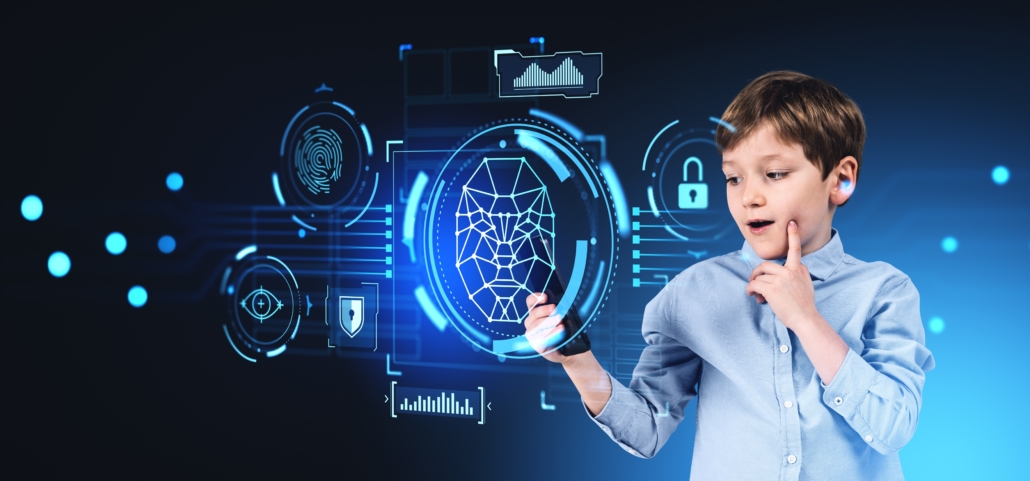As we observe Cybersecurity Awareness Month, it’s essential to focus on a critical issue affecting K-12 schools: Cybersecurity. In today’s digital world, schools have become prime targets for cyberattacks. With sensitive student information, parental financial data, and educational materials stored online, the need for robust cybersecurity layers has never been more urgent.
Why Are Schools at Risk?
K-12 schools are attractive targets for cybercriminals for several reasons. Many schools lack the advanced cybersecurity infrastructure of larger organizations, making them vulnerable to ransomware, phishing, and data breaches. With the increased use of digital learning platforms, cloud systems, and online communications, the number of potential entry points for attackers has multiplied.
The sensitive nature of the data schools handle—student records, financial details, medical information, and proprietary teaching materials—amplifies the consequences of a breach. According to the K-12 Cybersecurity Resource Center, there were 408 publicly disclosed cyber incidents in 2020, a record-breaking year for cyberattacks on U.S. schools. These incidents can lead to identity theft, financial loss, and severe reputational damage for educational institutions.
The Rise of Sophisticated Attacks
Cyber threats targeting schools are becoming more advanced. Ransomware attacks, where hackers lock down school networks and demand payment to restore access, have surged in recent years. In 2021, the FBI and CISA (Cybersecurity and Infrastructure Security Agency) issued multiple warnings about ransomware attacks specifically targeting K-12 schools. These attacks often disrupt learning, compromise sensitive data, and cost schools significant amounts of money. In addition to ransomware, phishing schemes are also becoming more prevalent. Attackers impersonate trusted contacts to trick staff and students into sharing sensitive information or clicking malicious links.
Human error plays a major role in these breaches. Whether it’s a teacher inadvertently opening a phishing email or a student downloading malware, one mistake can compromise the entire system. That’s why a combination of technical security measures and user education is critical for schools to defend against these evolving threats.
The Importance of Layered Cybersecurity
So, how can schools protect themselves from these increasing threats? The answer lies in a layered cybersecurity approach. Think of it as a series of protective barriers, each designed to block different types of attacks, making it harder for cybercriminals to infiltrate the school’s network.
Here’s why this approach is so important:
- Firewall Protection: A firewall acts as the first line of defense, blocking unauthorized access to the school’s network. It filters out potentially harmful traffic before it reaches your systems.
- Endpoint Security: With so many devices—laptops, tablets, and smartphones—accessing school networks, endpoint security is essential. Antivirus software, regular system updates, and device management tools ensure that each device is secure and monitored.
- Data Encryption: Even if hackers manage to breach the initial defenses, data encryption ensures that sensitive information remains unreadable without the correct decryption keys. This layer is critical in protecting student and staff data from being misused.
- Multi-Factor Authentication (MFA): MFA adds another layer of security by requiring users to provide multiple forms of verification, such as a password and a one-time code sent to their phone. This significantly reduces the risk of unauthorized access, even if login credentials are compromised.
- Regular Software Updates and Patching: Cybercriminals often exploit vulnerabilities in outdated software. Ensuring that systems are regularly updated and patched closes these gaps, making it harder for attackers to find weaknesses to exploit.
- User Education and Awareness: No security system is foolproof without education. Schools must invest in regular training for staff and students, teaching them to recognize phishing attempts, avoid suspicious links, and practice safe online habits. According to IBM’s “Cost of a Data Breach Report,” human error accounts for 82% of breaches, underscoring the importance of user education.
The Growing Need to Partner with a Managed Services Provider
For many K-12 schools, managing these layers of cybersecurity can feel overwhelming, especially with limited IT resources. This is where partnering with a Managed Service Provider (MSP) like i-Tech for Schools becomes invaluable. i-Tech ensures that school networks are properly protected, regularly monitored, and updated with the latest defenses.
i-Tech for Schools offers:
- Proactive Threat Monitoring: Continuous monitoring of school systems for potential threats, ensuring they are addressed before they cause damage.
- Regular Security Audits: Comprehensive reviews of the school’s cybersecurity posture, identifying weaknesses and areas for improvement.
- Disaster Recovery Plans: Critical strategies for ensuring business continuity, even in the event of a cyberattack.
- Cybersecurity Training: Custom training programs to help staff and students stay aware of the latest threats and best practices for staying safe online.
Conclusion
Cybersecurity in schools is no longer optional—it’s an absolute necessity. As the frequency and sophistication of cyberattacks grow, a layered cybersecurity approach is essential for safeguarding sensitive data. By combining multiple layers of protection, educating staff and students, and partnering with a trusted MSP like i-Tech for Schools, schools can ensure they’re taking every step possible to protect their networks and, most importantly, their students.








